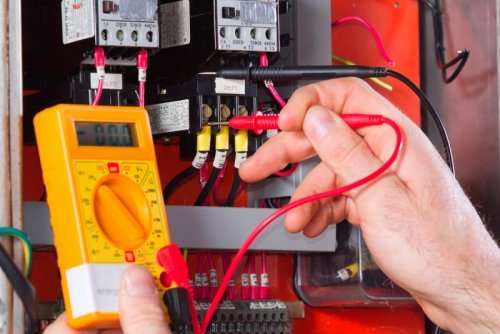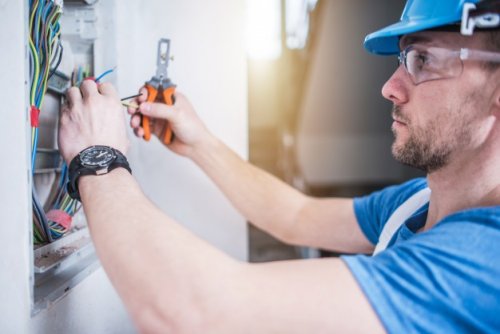Electrical Safety Adoption Groups: What's Out There and How to Get One
What are electrical safety admissions groups for?
In order to determine the qualification of each technical specialist, various certificates are used with the entry of entries in the work book and the execution of orders for the enterprise. Skilled workers have grades, engineers have categories. In theory, all this should characterize the level of complexity of the tasks that can be entrusted to a specialist. In fact, the grade and categories are at best used to determine the salary level.
But for electrical personnel, there is another way to determine skill level. We are talking about an electrical safety reception group. Since the appointment of this group is carried out only with the participation of the commission, the composition of which is strictly agreed, and the certified specialist is necessarily issued a certificate for a single sample, then the certificate for the reception group becomes a decisive document in the assessment of specialists.
And an assessment is needed, for example, at the time of hiring (according to a certificate from a previous enterprise - so it is important to keep even old "skins" with you). Another situation where electrical safety acceptance group certification is required is the appointment of a responsible manager and team members to carry out any work on electrical installations.
An electrical safety tolerance group specialist is primarily determined by the level of knowledge of safe methods of working with electricity. There are five groups in total. Let's talk about each of them.

What do tolerance groups mean?
1st electrical safety group assigned to persons who do not service electrical installations (not electrical personnel) and also do not work on existing electrical installations (not electrical personnel). That is, these are people who have nothing to do with electricity. The first group is mandatorily appointed to persons from the electrotechnical and electrotechnological staff in the absence of even minimal experience in electrical installations and special education.
The employer must ensure that these people are never exposed to electric shock. Therefore, formally, even a loader in a warehouse must have a certificate with the first group, because the warehouse has electric wires and some devices with an electric drive. As a rule, no one pays attention to this, although for the assignment of the 1st group, only instructions from a specially appointed person with a resolution group of at least 3 are sufficient. The briefing ends with control questions, on the basis of which a decision on the assignment is made to the group.
The "specialist" with the first group of electrical safety should know about electric shock hazard, for safe methods of performing one's duties, as well as for ways of providing basic first aid for electric shock.
2nd group of electrical safety assigned to electrical and other non-electrical personnel, already based on the results of certification in the commission of an enterprise or department of Rostechnadzor. Formally, to be certified for the second group, a specialist must have experience in electrical installations for 1-2 months, depending on his education. If the certification for the second group is basic, and the certified person does not have an education in electrical engineering, then before certification he must to undergo theoretical training in the amount of at least 72 hours.
Electrical personnel can also be certified for the second group for admission in the absence of special education and with minimal experience in electrical installations in the first group (although representatives with the first group can actually be present only during work and even then at a respectful distance ).
Persons with the second admission group can work in electrical installations under supervision and without making connections. Typical professionals for whom it is necessary and sufficient to have a second group are welders, crane operators and elevator operators.
A specialist with the second group must have knowledge in the volume of the first group and, in addition, have an idea of the general principles of operation of electrical installations under his jurisdiction. First aid skills in case of electric shock should be practical.
The question of where to get practical experience often causes difficulties, and there is only one way out of the situation — the use of simulators with special dummies.
Non-electrical personnel are generally not required to be certified for the second group if their place of work is not an electrical installation. However, many employers are reinsured and you can easily meet cleaners and salespeople on courses to get the second group. The second group of electrical safety approvals is the maximum that a person under the age of 18 can get.
3rd group of reception for electrical safety assigned according to the results of certification in the commission of the enterprise or department of Rostechnadzor. The third group can be held only by electrical personnel, since it is assumed that a specialist with this group can independently check and connect electrical installations up to 1000 volts, and also be part of a team servicing electrical installations above 1000 volts, if there is a note in the certificate «up to and over 1000 volts».
A person with a third group of tolerance may already be responsible for the safe conduct of work in electrical installations: he may allow the brigade to work in electrical installations up to 1000 volts, may supervise when carrying out particularly dangerous work, may be a manufacturer of works in electrical installations up to 1000 volts when carrying out work along and in installations over 1000 volts when carrying out work to order.
You can get a third group for admission after different time of work in electrical installations in the second group.For example, a specialist with a higher electrical engineering education can receive the third group after one month of work in the second group, and a trainee from a vocational school - after only six months.
A specialist with a third reception group must have knowledge in the volume provided for the previous two groups. But besides that, he needs to know electrical engineering as such, to know the device of electrical installations and the procedure for their maintenance, to have the skills to release a person from the action of electric current.
The 4th group of electrical safety is also awarded based on the results of certification at the commission of the enterprise Rostechnadzor. Specialists with the fourth reception group can perform a wide range of duties: they can issue an order for work in electrical installations up to 1000 volts and issue orders for work in installations over 1000 volts from the list approved by the person in charge of electrical equipment. If there is a sign "up to and over 1000 volts" in the certificate, a specialist with the fourth group can be a manufacturer of work and allow more than 1000 volts in installations.
A specialist with a higher electrotechnical education can get the fourth reception group after two months of work, and a person without a secondary education - after only six months of work in the third reception group. In general, trainees cannot get the fourth intake group.
The fourth admission group assumes knowledge in an amount provided for by the three previous groups, but a specialist with this group must already know electrical engineering in the full program of the vocational school, be able to read diagrams, know fire and electrical safety, and also have skills for conducting briefings and training of personnel.
The 5th group of reception for electrical safety assumes the maximum responsibility of a specialist and his ability to perform any work in electrical installations, as well as to supervise such work until the fulfillment of the duties of the person responsible for the electrical system. The fifth group is awarded only on the basis of the results of certification in the commission of the enterprise Rostechnadzor. If there is a note «up to and over 1000 volts» in the certificate, a person with a fifth group can be the issuer of the order / order, the acceptor, the responsible manager and the producer of work in any electrical installations.
A specialist with a higher electrotechnical education can get the fifth reception group after three months of work, and a person without a secondary education - only after twenty-four months of work in the fourth reception group.
The fifth tolerance group implies knowledge of the schemes and layout of all electrical equipment under the supervision of a specialist, knowledge of safety standards, rules for the use of protective equipment, as well as the schedule of their tests.
A person with a fifth group should know the requirements of regulatory documents for electrical and fire safety, as well as being able to convey and explain these norms during briefings.A specialist with a fifth reception group must be able to organize the management of work of any complexity in any electrical installations.
Who should be included in the attestation committee?
The composition of the enterprise commission intended for the certification of electrical safety specialists depends on the level of the certified. The certification of electrical and electrotechnical personnel requires a committee of five people, whose chairman is the person responsible for the electrical industry.
The commission usually includes a labor safety engineer who must monitor the operation of electrical installations, as well as a leading (chief) engineer of the enterprise. All members of the commission must be certified in the Rostechnadzor department or with the participation of an inspector from this organization, and the chairman must have the V acceptance group if the organization works with installations over 1000 volts and the IV group if there are no such installations in the organization.
Based on the results of the certification, the committee draws up a protocol, signed by all members, in which a record is made of the assessment of the knowledge of the person being certified, for the specified electrical safety group and the date of the next certification. The same data is entered in a special table in the certificate of the person being certified, but only the chairman's signature appears there.
The knowledge of electrical and electrotechnical personnel working directly in electrical installations is checked annually. The same applies to administrative and technical staff with the right to work in electrical installations on an official basis.Other administrative and technical staff, including labor safety engineers, are certified once every three years.
What does the cleanup group contain?
In addition to the information about the passed certificate, the electrical safety certificate on the first, title page contains the following information:
- last name, first name and patronymic of the specialist;
- title and place of work of a specialist;
- specialist category from the point of view of electrical safety (repair persons, service personnel, service and repair personnel, administrative and technical personnel, administrative and technical personnel entitled by title).
The title page is certified with the seal of the company and the signature of the person responsible for the electrical system. The head of the enterprise signs the certificate of the person responsible for the electrical equipment.
The last page of the certificate is a table with the heading "Certificate of right to perform special work". As follows from the title, markings are made here for the right to perform special work, for example, work at height, or work on tests and measurements in electrical installations (for electrical laboratory specialists).

